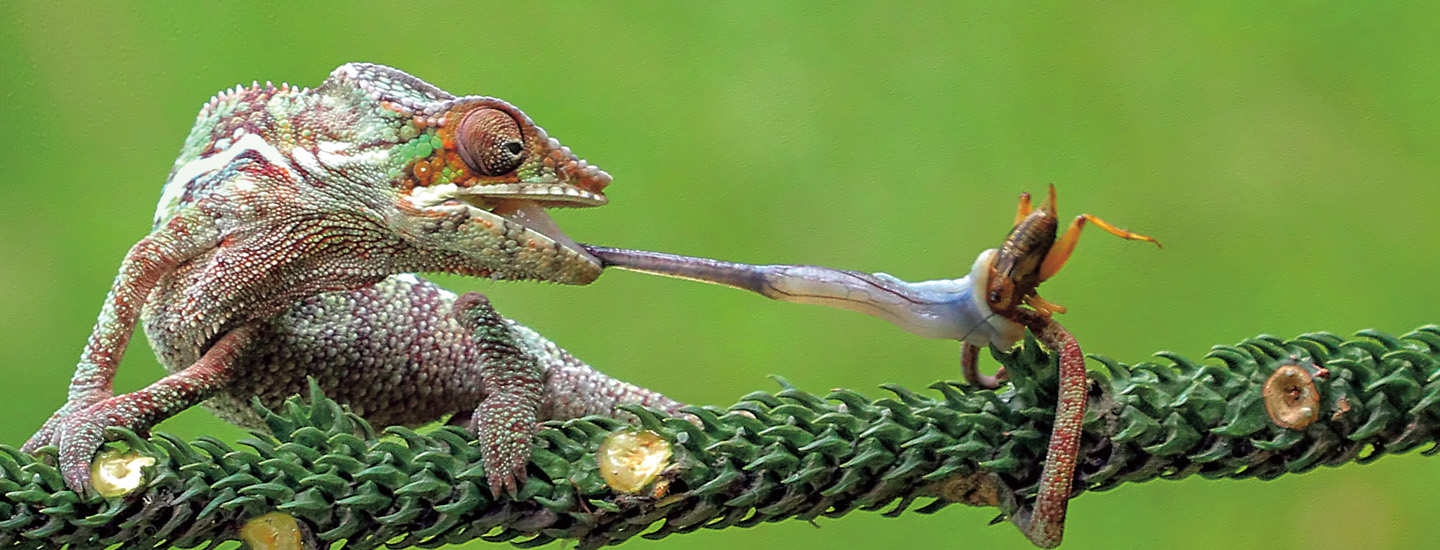Buzz! An insect flies through the air, unaware of a chameleon perching motionless nearby. In the blink of an eye, the lizard lashes out its tongue, snags the bug mid-flight, and yanks it into its mouth. We’ve long known about the incredible speed of a chameleon’s tongue. But how it holds on to prey was a mystery—until recently. A team of scientists discovered the chameleon’s secret weapon is super-sticky spit.
A chameleon’s saliva is sticky, like honey. The reptile needs only a thin layer of this substance coating the tip of its tongue to catch its prey, says Pascal Damman, a physicist at the University of Mons in Belgium. He was part of the team that studied the sticky science behind chameleons’ spit. It’s one of the many adaptations that make these animals such great hunters. “They are probably the ultimate predators,” says Damman.
Buzz! An insect flies through the air. It has no idea a chameleon is perched nearby. The chameleon is perfectly still. Then, in the blink of an eye, the lizard lashes out its tongue. It snags the bug and yanks it into its mouth.
Scientists have long known about the incredible speed of a chameleon’s tongue. But they didn’t know exactly how it holds on to prey. A team of scientists recently discovered the chameleon’s secret weapon. It’s super-sticky spit!
A chameleon’s saliva is sticky, like honey. The reptile needs only a thin layer of spit on its tongue to catch prey. It’s one of many adaptations that make chameleons great hunters, says Pascal Damman. He’s a physicist at the University of Mons in Belgium who worked on the discovery. “They are probably the ultimate predators,” he says.

